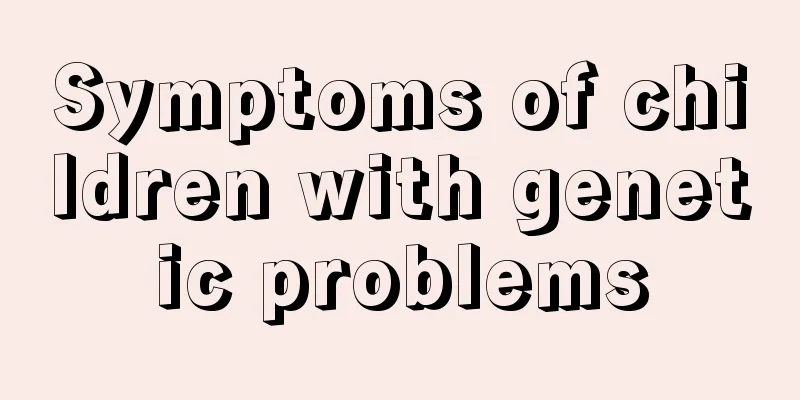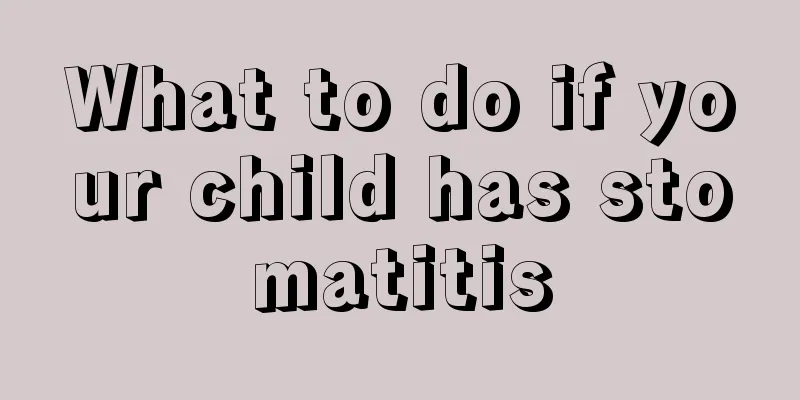Symptoms of children with genetic problems

|
Children will inherit many characteristics of their parents. For example, if both parents have double eyelids, the child will definitely have double eyelids as well. This is also determined by genes. If parents have certain physical diseases, they will also be passed on to their children, so some parents are not suitable for having children. Children with genetic problems also show obvious symptoms, so genes have many characteristics, such as universality, randomness, and non-directionality. The affected children are slightly shorter than the average height of normal newborns at birth, and the difference becomes more obvious with age. The height of adult patients rarely exceeds that of normal 10-year-old children. The hands are short and thick, with wide palms and only one horizontal line, showing horizontal palm creases (through-the-hand) and other characteristic dermatoglyphic changes, such as the little finger being short and inward-bent with a single crease (i.e., the fifth finger has two sections). Muscle tone is reduced, and most children still cannot walk at the age of 3 to 4 years old. Infants and young children may have slow or unresponsive Moro and difficulty eating. The children have obvious abnormalities in intelligence and mental development, with an IQ of 20 to 70, an average of 40 to 50, mostly below the Gaussian curve. 90% of the children can only speak at the age of 5. Most are quiet, docile, and approachable, and can live up to 40 years. Some patients may have cataracts, congenital heart disease or cerebral embolism and brain abscess secondary to heart disease, gastrointestinal abnormalities such as duodenal stenosis, atlantoaxial joint instability, strenuous exercise can lead to spinal cord compression, and the incidence of myeloid and lymphocytic leukemia is higher than that of normal people. Patients almost universally develop Alzheimer's disease in their 40s, with symptoms such as inattention, taciturnity, poor visual-spatial orientation, decreased memory and judgment, and epileptic seizures. Down syndrome is also called trisome 21 syndrome and congenital idiocy. This is the most common chromosomal disease in humans, with an incidence rate of 1/700 to 1/600 in newborns. It is the most common cause of mental retardation, accounting for 10% of cases of severe intellectual developmental disorders. Gene mutations have the following characteristics. 1. Universality Since there are many factors in nature that can induce gene mutation, and it can also occur spontaneously, gene mutation is ubiquitous in the biological world. 2. Randomness Randomness refers to the time when gene mutation occurs, the individuals in which the mutation occurs, the genes in which the mutation occurs, etc., which are all random. The countless mutations found in higher plants illustrate the randomness of gene mutations. Generally speaking, the later a gene mutation occurs during the development of an organism, the fewer mutations the organism will exhibit. 3. Non-directional The non-directional nature of gene mutation is reflected in the fact that a gene can mutate in different directions, producing more than one allele. For example, the gray gene that controls the coat color of mice can mutate into either a yellow gene or a black gene, and there is no clear causal relationship between the direction of the gene mutation and the environment. 4. Rarity Mutations are extremely rare, meaning they occur at a very low frequency. Generally speaking, the mutation rate of bacteria is 10-4 to 10-1G, and the mutation rate of higher organisms is 10-5 to 10-8. Although the frequency of gene mutation is low, when there are many individuals in a population, a variety of random mutations may occur, which is enough to provide rich heritable variation. 5. Reversibility Gene mutations are also reversible. A mutant gene can become a wild-type gene through mutation, a process called reversion. The forward mutation rate is always higher than the reverse mutation rate. Only a structural change at one position within a mutated gene can restore it to its original state. 6. Less benefit, more harm Generally, gene mutations will produce some adverse effects, such as elimination or death. Only a very small number of genetic mutations are beneficial and may increase the adaptability of a species. |
<<: Diet therapy for night sweats in children
>>: What is the head circumference of a 2-year-old baby?
Recommend
Why do newborn baby's nails turn black?
The baby's health is the biggest concern of t...
Tuberculosis in children
Diseases such as childhood tuberculosis are actua...
Parents can cultivate their children's living habits in this way
Parents, it is very important to help children de...
What to do if your baby falls to the ground
For new parents, there are many things to learn, ...
Correct way to massage for indigestion in children
Children at home are treasures. Do you know the c...
Children swallowing foreign objects
When children are in school, they are very curiou...
When should babies take vitamin D?
In fact, many trace elements in the human body ar...
How to take care of a baby who has a fever and keeps crying
For most babies, crying is a very normal thing, b...
What should I do if my child has a fever and cold hands and feet?
Because children's organs are not fully devel...
Fetal umbilical cord blood flow test results
Everyone knows that nowadays pregnant women have ...
What are the dangers of intravenous infusion in children?
For many diseases of the body, people generally c...
What to eat for kids is good for their brains
The brain development of children is of concern t...
What to do if your 3 month old baby has a low fever
When the baby is more than three months old, he i...
What is the soft spot on the baby's head?
The top of a baby's head is usually soft, bec...
Diet therapy for allergic asthma in children, these recipes are very valuable
If allergic asthma occurs in children, parents ar...









